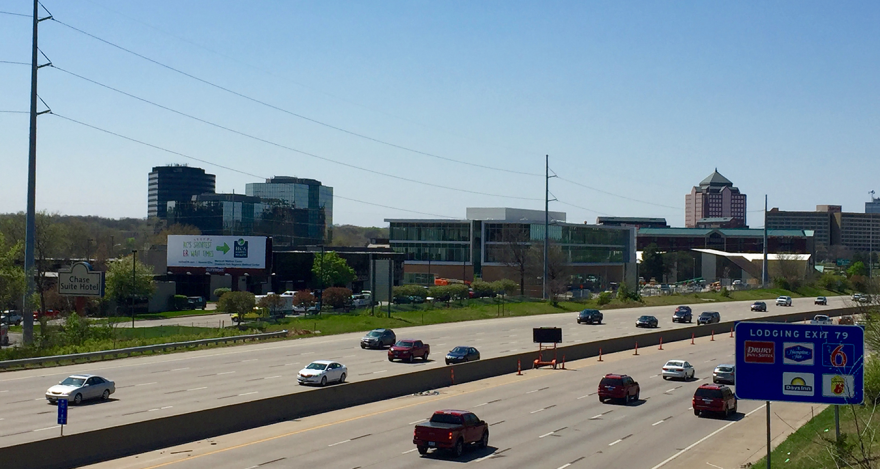It’s been 30 years since metropolitan Kansas City’s beltway, Interstate 435, was completed, and its important role as a route for economic development has been a tale of two states.
In southern Johnson County, where the first leg of I-435 opened between I-35 and Metcalf Avenue in 1965, smart planning by local and state leaders has made the I-435 corridor that area’s bustling main street.
During the last 10 years alone, commercial property values bordering the stretch from Quivira Road to State Line Road have soared 107 percent, from $1.4 billion in 2007 to $2.9 billion today, according to the Johnson County Department of Technology and Innovation.
In Wyandotte County, the development of the Village West retail project, Cerner offices, Sporting Kansas City soccer club stadium and the Kansas Speedway at I-435 and I-70 has been that community’s biggest development story of the past 20 years.
Meanwhile in Missouri, with the exception of a few isolated projects, notably the Truman Sports Complex, Worlds of Fun and Cerner’s growing office presence along Bannister Road, I-435 hasn’t had near the economic impact seen in Kansas.
Kansas City is known for its extensive freeway network, and I-435 is no exception. The 81-mile route is one of the longest in the United States and the world. It’s 17 miles longer than the country’s best known beltway: I-495 around Washington D.C.

Whitney Kerr Sr., a respected real estate expert who helped develop the landmark Corporate Woods office park in Overland Park along I-435 in 1972, says Kansas had the foresight to pave the way for future development when the beltway was built.
“Kansas followed the Texas plan, buying a wide enough swath of land for the high-speed interstate artery plus room for parallel service roads,” says Kerr. “Missouri just bought enough land for the interstate route and diamond intersections, and didn’t connect those diamonds from point to point.”
Kerr says the critical factor in pushing growth along I-435 in Johnson County was building College Boulevard, which parallels the freeway to the south from roughly the Missouri line to I-35. It provided convenient access to businesses locating along the corridor.
The first big project was the development of the Fox Hill Office Park at Roe and I-435 in 1969, followed by the 10-story former Yellow Freight headquarters in 1970 and the 293-acre Corporate Woods development beginning in 1972.
“Now, there’s more first-class office growth in that corridor than all of Kansas City, Missouri, put together,” Kerr says.
Real estate has become so valuable along that stretch that one of the earliest big projects to go up, the 10-story former CenturyLink tower built in 1972 at Nall Avenue, was recently imploded to make way for a three-building office campus being developed by VanTrust Real Estate.
Dave Harrison, president of VanTrust, estimates his firm has either recently completed or has underway a “couple hundred million bucks” worth of office and apartment projects along the I-435 corridor in Johnson County.
More than 150,000 vehicles use that stretch of the freeway from Quivira to the State Line each day.
“We really like that corridor,” Harrison says. “When you think what’s on either side of it: the north side is all infill, desirable communities for the office part of it, and on the south side you have all that great access.”
Doug Davidson, president of the County Economic Research Institute, or CERI, says Johnson County elected officials worked cooperatively with developers to take advantage of the freeway.
“Part of our success is we have quality public leadership and developers who envisioned what could be, and local government officials who helped facilitate that development with infrastructure on the I-435 corridor,” says Davidson.
Kevin Collison, a freelance contributor to KCUR 89.3, writes about downtown Kansas City for his website CityScene KC.




